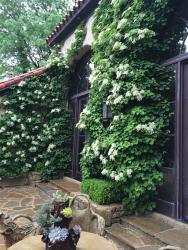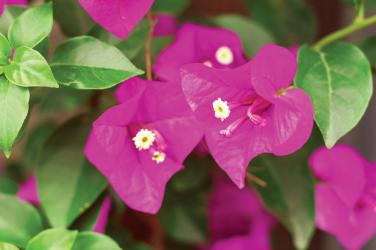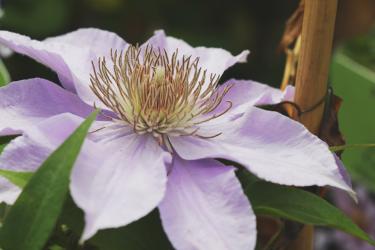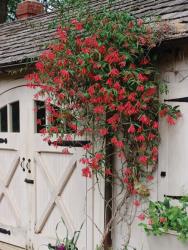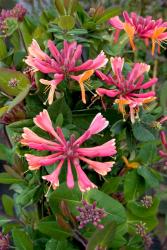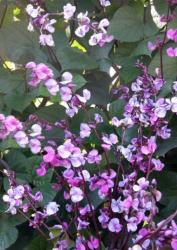Your garden isn’t limited to the ground; take it to new heights! These climbing plants are the perfect addition to any landscape, whether delicately covering an archway in a garden or sprucing up a blank trellis. Here are some of our local landscapers’ favorites.
Hydrangea anomala, also known as Climbing Hydrangea.
Information provided by Justin Verbyck at Frisella Nursery.
Water
Requires a medium amount of water.
Soil
Prefers rich, fertile soils.
Location + Light
Needs part to full shade.
Flowering Time
Flowers May through July.
Fertilizer
Use slow-release or organic fertilizer in late winter or early spring. Another light application of organic feed or compost may be added in the summer.
Pruning time
Wait until plant has finished flowering to prune. This controls the growth habit.
Mulching requirements
Make sure rootstock is covered during winter.
If you love hydrangeas and have a vertical surface one would grow beautifully on, the climbing hydrangea may be the perfect fit. The climbing hydrangea clings to strong surfaces or trees and slowly creeps into a beautiful wall of green. It is safe for brick as long as its mortar is in good shape to begin with. It only sticks to surfaces, therefore, it cannot create damage on a perfectly good wall. It may, however, leave a sticky residue on the wall should you ever want to remove it. A butterfly magnet, the climbing hydrangea provides year-round interest but is typically grown for its white lace-cap blooms of early summer. Its green leaves turn to a beautiful yellow color in the fall and its bark's beautiful peeled texture provides an interesting dimension in the winter. Mature plants can create a standout piece in the landscape, growing up to 40 feet tall and around 24 inches wide in ideal conditions. Well-maintained climbing hydrangea can live up to 70 years. It's important to note that climbing hydrangea may take years to bloom as perennial vines typically do.


